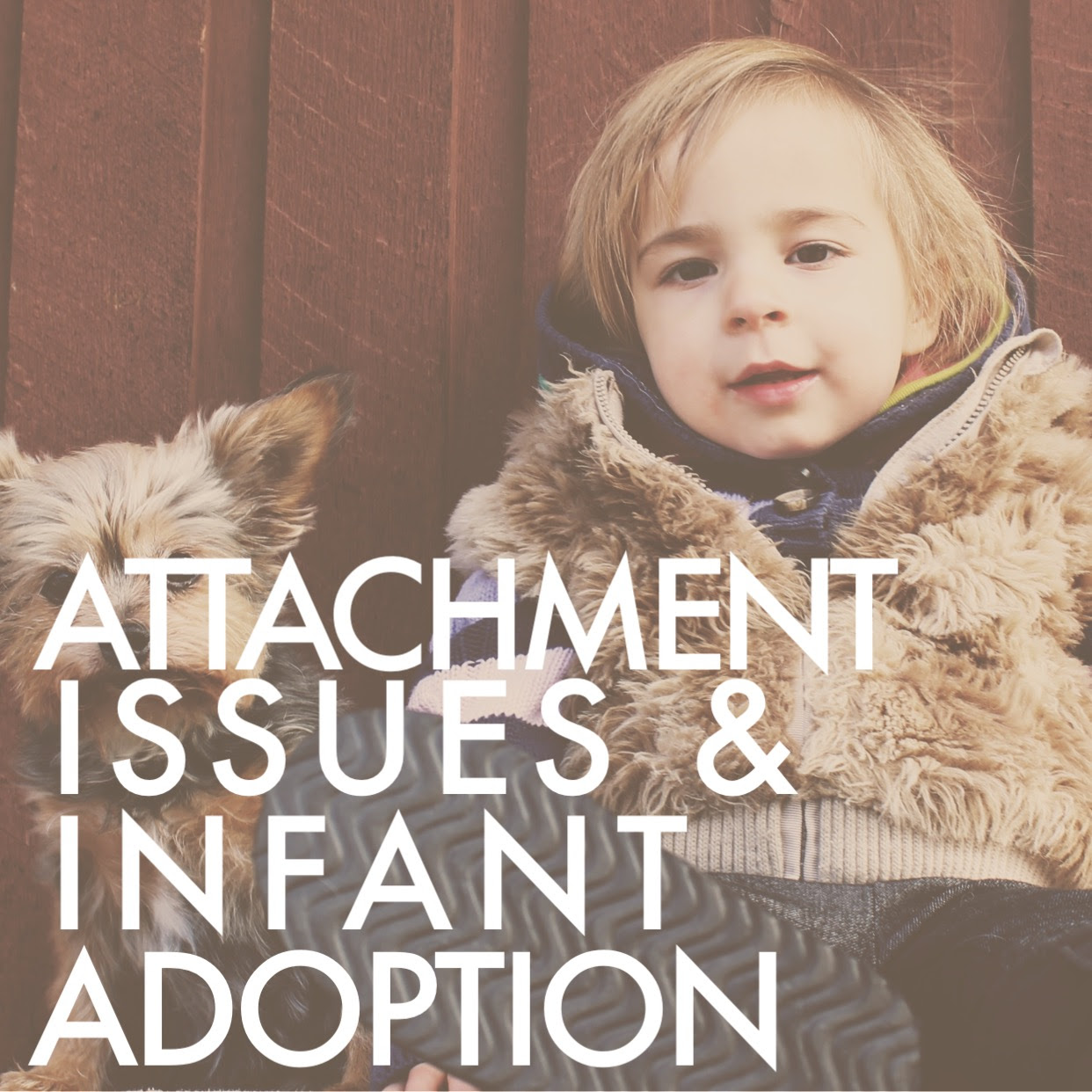
Attachment Issues and Infant Adoption
By Kathy Petefish, LMSW, LCPC, BCBA, LBA
How often have I heard those frustrating and sad words in the last 15 years that I have worked with children? At least a hundred, since working with children with Reactive Attachment Disorder (RAD) has been in my wheelhouse for over a decade.
These words are frustrating because they are very often not true. Just because a child is adopted as an infant does not mean they will not have difficulty with attachment issues. Foster and adoptive parents are set up for failure, confusion, and heartbreak when professionals, who do not have accurate information, tell them differently. These words are sad—very sad—because if parents had all the information, they could very possibly prevent attachment issues from occurring later in life.
Reactive Attachment Disorder (RAD) is a psychological/emotional disorder that occurs when a child is incapable of developing a healthy emotional attachment to his/her primary caregiver and where there is a “consistent pattern of inhibited, emotionally withdrawn behavior toward adult caregivers…” (DSM 5). Although it is often not discussed as such, RAD is a brain development disorder. That is, early in a child’s life there have been traumatic experiences that have prevented certain areas of the brain from fully developing, and as the child gets chronologically older, he/she may not age emotionally.
One of the best examples of this is with object permanence. When an infant is about 7-8 months old, they begin to look for items they can no longer see, because they are beginning to learn that objects exist regardless of sight. A child with RAD may have developmental delays in this area because their brain does not function typically. So you might have an 8 year old child who cannot understand that their favorite toy still exists when it is placed out of their sight, thus they wail and cry when it is taken from them, because they believe it is gone forever. Imagine the implications of this if the same 8 year old doesn’t understand that his wonderful new adoptive mother still exists even when he is at school and she is elsewhere.
I have found it helpful to think of the ability to form healthy relationships and attachments as being on a continuum, where 0 represents a child having virtually no ability to attach and 10 represents a child being completely capable of forming healthy attachments. A very low number (0,1,2) would be a diagnosis of “full blown” RAD, whereas a higher number (3,4,5,6,7,8) might not be a RAD diagnosis, but may still indicate “attachment difficulties.” Another way of thinking about this is in terms of risk factors: a child with a very low number most likely has a greater number of severe risk factors, and a child with a higher number may have risk factors that are not as severe and/or as prevalent.
Most professionals attribute the development of RAD to gross negligent care and/or abuse of a child from birth to 2 years of age. Generally, when someone thinks of RAD, they think of a baby crying alone in a crib with filthy diapers, and no consistent care day after day, and month after month. While it is certainly true that these conditions would be the highest risk factors for a child having attachment issues, there are other risk factors that are less known.
In utero experiences are critical in the early development of a child’s brain. Many people are aware of the adverse effects of in utero alcohol and drug use. But what if a mother is bed-bound during a great deal of her pregnancy? The movement of the fetus in the mother’s stomach is critical for optimal brain development and lack of movement has a detrimental impact. What if the baby is exposed in utero to domestic violence? This exposure has a similar detrimental impact pre-birth, as it does to a baby after delivery. So if the birth mother is inactive, ill, living in violent circumstances, and/or using drugs/alcohol during her pregnancy, there could be multiple risk factors that could contribute to the baby having attachment difficulties later in life.
Following the birth of the baby, nurturing, touch, and attendance from a primary caregiver is critical to developing the areas of the brain responsible for social attachments. There are multiple reasons, beyond abuse and neglect, why this may not occur. Was the child born premature? If the child is from an orphanage with multiple other infants, did he/she receive the necessary touch and nurturing for optimal brain development? Was there a frequent change of caregivers? Imagine that you are an infant who just came in the world and all you knew was the smell and voice of your birth mother. Then suddenly she is gone and you are placed with unfamiliar smells and sounds and many different people caring for your needs in different ways.
There are dozens of risk factors that can contribute to attachment difficulties and RAD. If a child experiences one or two of these factors in isolation (e.g., born premature only) the risk of attachment difficulties is lower, but not completely mitigated. And of course the more risk factors, and the more severe the risk factors, the greater the possibility that the child will have attachment difficulties or RAD.
The good news is that simply being aware of the possibility of these risk factors can help parents to prevent attachment issues as the infant gets older. Being aware of the signs and symptoms of attachment difficulties in infants can further arm parents. The most common symptoms include:
- Avoids eye contact
- Doesn’t smile
- Doesn’t reach out to be picked up
- Rejects your efforts to calm, soothe, and connect
- Doesn’t seem to notice or care when you leave them alone
- Cries inconsolably
- Doesn’t coo or make verbal sounds
- Doesn’t follow you with his or her eyes
- Isn’t interested in playing interactive games or playing with toys
The most common thing parents of children with RAD have told me about the same child as an infant is, “He never liked to cuddle and he always seemed so independent. He was a great baby because he never cried. That was just his personality.” Parents and professionals: If your adopted child does not cry and does not cuddle, it is probably not because it is “just their personality”.
Babies with attachment issues sometimes do not cry because they have learned early on that crying does not result in their needs being met, and so, they remain silent and “numb”. If babies do not want to be cuddled, it may be because they think touch is threatening. Contrary to some pediatricians’ or caseworkers’ assertions, attachment difficulties are not something they will “grow out of.” The very best thing you can do is to assume that your child has attachment difficulties and act accordingly.
If you do nothing different, and just let your non-cuddly child be left alone because that’s what he seems to want, the issues will only worsen later. There are many things you can do to help! Read about attachment difficulties from reputable sources such as www.attach.org. Consult a professional with expertise in RAD and adoption and trauma issues. Provide basic attachment-based parenting interventions such as these:
- Use a sling or a front-wrap carrier for transportation, and have lots of skin-to-skin contact.
- Avoid frequent or prolonged separations from your child.
- Consider sharing your bed, if and when it is age appropriate (if unsure, consult a professional) — or at least your bedroom.
- Be responsive to your child’s needs even if they cry when you put them to bed. Babies cry because they are distressed — not because they are manipulative.
- Play games that involve eye contact and touch very often and daily. If they appear distressed, build tolerance over time by starting out with short, frequent play sessions and making them longer over time.
Do not let your child’s avoidance of touch and eye contact inhibit you from pursuing healthy contact and connection with your child. These interventions will not hurt a child who does not have attachment issues and very well may save a child who does. For additional information contact Agape Christian Counseling Services.
 About the Author:
About the Author:
Kathy Petefish started her career in corporate strategic marketing but in 2000 she experienced a spiritual epiphany which changed the trajectory of her career. She began working with youth, ages 3-17 years, who were struggling with emotional and behavioral disabilities, and has been in the field ever since. She has specific expertise in Reactive Attachment Disorder (RAD) and Autism Spectrum. To read more of Kathy’s bio, click on the photo to the left.





